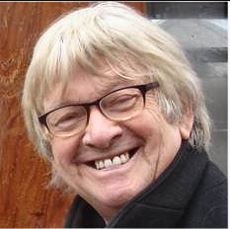On 24 January 1986 Rupert Murdoch’s News International group moved production of their four newspapers (Times, Sunday Times, Sun and the News of the World) to Wapping in east London’s Docklands. Some 5,500 production and clerical workers were sacked overnight in what had been a carefully prepared exercise that was to change the face of the newspaper industry. The journalists were not sacked but more than 50 – ‘the refuseniks’ took a stand on principle and despite ‘bribes and other incentives, walked out of their jobs, refusing to move to Wapping on solidarity with their production and clerical worker colleagues.
Twenty five years later, as veterans of the dispute joined with other trades unionists and supporters in St Brides Institute off Fleet Street, the historic meeting place for newspapers workers, Murdoch was once again in town. He was attempting to pick up the pieces of the Coulson and ‘phone hacking affairs at the News of the World, while manoeuvring behind the scenes with his new friends in the Conservative led coalition government, to avoid a long and costly delay that reference of his bid to the Competition Commission for the rest of BSkyB would bring about.
The meeting on Tuesday 25 January was a moving, and positive affair. The majority of speakers were from the floor and most were veterans of the year long struggle who told their stories. The meeting kicked off with a round of applause for the strikers. It also remembered those who had died from their injuries, dealt out by a vicious police presence during the year long dispute.
Granville Williams from the Campaign for Press and Broadcasting Freedom reminded the meeting of the role played by the Campaign in the dispute and the success of the campaign for the right of reply which had been taken up by production workers in Fleet Street during the miners’ strike and on occasions when they took action in support of other workers.
Mike Jempson, a local residence at the time, recalled the impact on the local community who the police tried to hold captive to secure the free passage for Murdoch’s lorries, owned by the TNT fleet and brought in to deliver papers to the distribution centres, thus avoiding potential solidarity action by rail workers.
Pat Healy a NUJ ‘refusenik’ recalled the action taken by journalists who rejected the move to Wapping, the promise of a £2,000 pay rise and free BUPA membership, and the impact that decision made of her life and those of her ‘fellow refuseniks’.
NUJ general secretary Jeremy Dear said that it was not enough to pay tribute in words to the spirit of resistance demonstrated at Wapping. “We must do so in action. Our movement must actively confront the anti-union laws, wage the fight for real employment and trade union rights, step up its organisation of those workers currently deprived of collective bargaining, including at Sky, News International and Associated newspapers, and join forces with all those who want to extend media democracy, accountability and plurality not crush it.” He concluded; “Tonight, 25 years on, we must commit to a new and more powerful resistance built on the spirit of that Wapping resistance;” sentiments that were shared by the packed audience of nearly 200 who had packed into the hall.
To find out more about the Wapping dispute go the CPBF web site at: www.cpbf.org.uk and listen to the Wapping podcast. From Sunday 1 May for one month there will be a multimedia Wapping exhibition at the Marx Memorial Library at 37a Clerkenwell Green, London EC1 organised by Unite’s Graphical, Paper and Media Sector, the NUJ and the CPBF.
